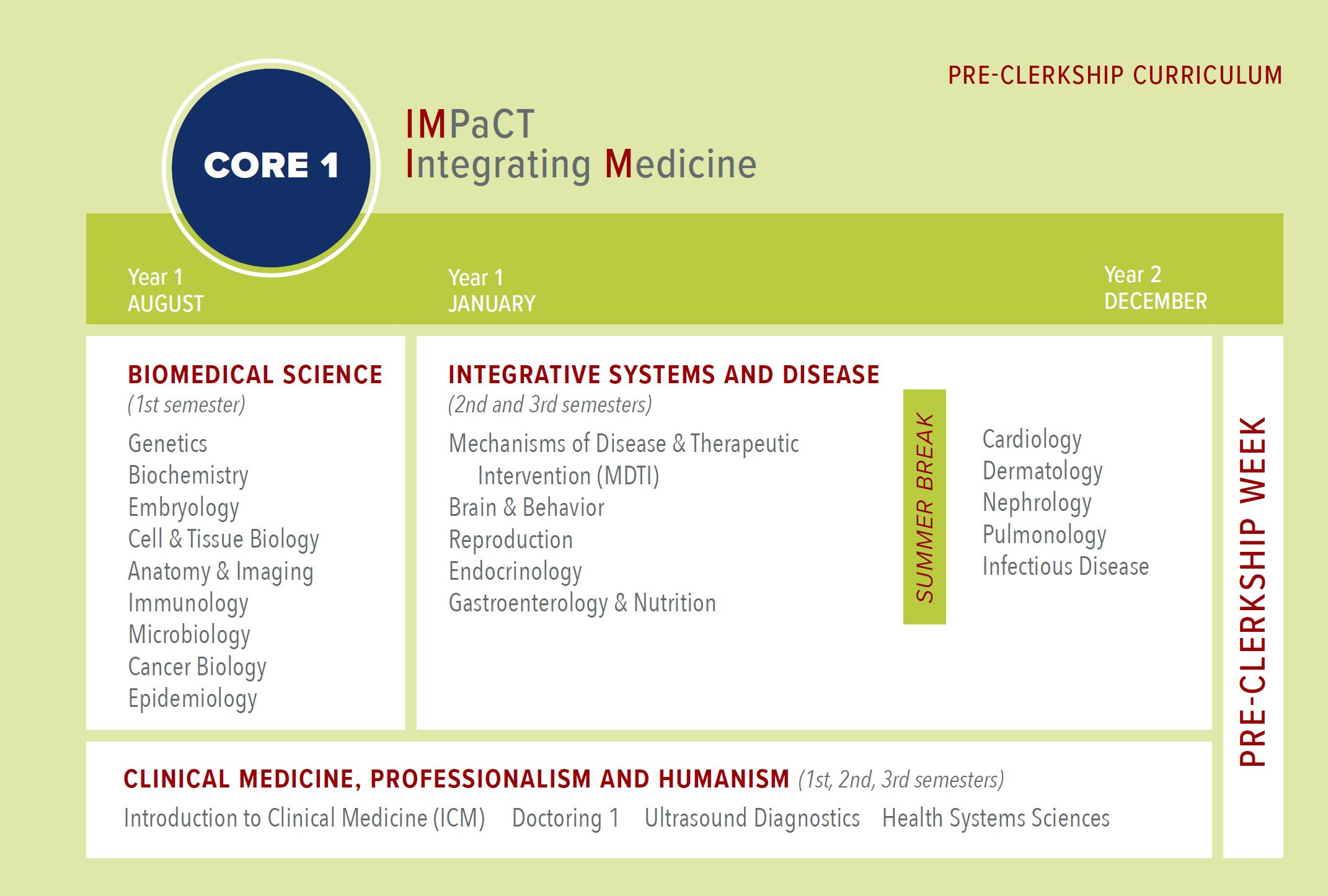Core 1

Core 1 Principles
August, Year 1 — December, Year 2
- Basic science and clinical medicine curricula emphasize foundational, integrative concepts
- Clinical anatomy directly links with radiologic imaging, ultrasound techniques, and physical exam findings
- Small group sessions use learning teams for optimal student and faculty engagement
- Clinical sessions highlight development of skills essential for patient care:
- Taking histories and performing physical exams
- Establishing relationships with patients across all cultures and genders
- Developing skills in differential diagnosis
- Exploring health systems sciences
- Learning experiences include seminars, workshops, case discussions, standardized patients, and exposure to clinical settings
- Ultrasound: 3-semester curriculum learning the technique for acquiring, reading, and applying ultrasound images for patient care
- Additional electives in Humanism, Arts and Medicine, Narrative Medicine, Medical Mandarin and Spanish, Leadership, Advocacy, Equity, and more
- Three afternoons are unscheduled, allowing time and flexibility for any activity of interest, such as working at one of the community clinics, attending classes outside of medicine, pursuing independent research, playing sports, continuing hobbies, or relaxing
INTEGRATIVE SYSTEMS AND DISEASE
- Curriculum is designed in blocks to integrate basic science and clinical medicine concepts related to an organ system
The structure incorporates:- Normal development
- Normal structure and function
- Pathophysiology
- Therapeutics and disease management
- Epidemiology and evidence-based medicine
- Disease prevention
- Imaging, lab medicine, diagnostics
- Differential Diagnosis
- Patient panels, career panels
- Pre-clerkship week: The final week of the pre-clerkship curriculum in December prepares students for the clerkship experience with a guided reinforcement
- Pass/Fail Grading

